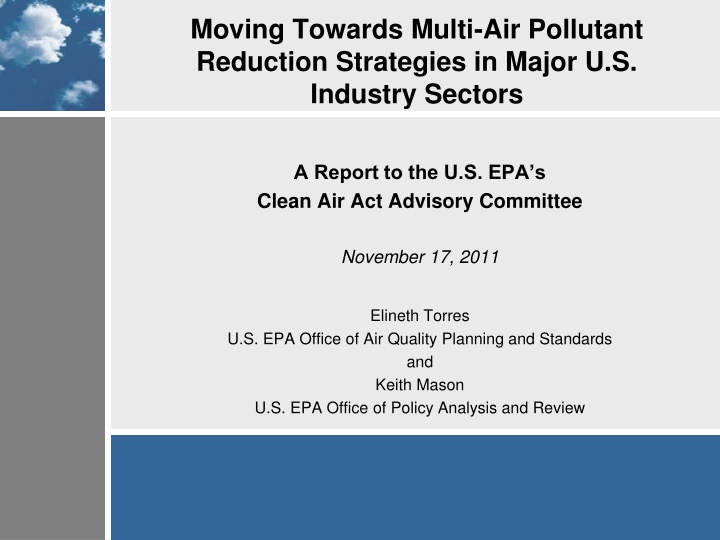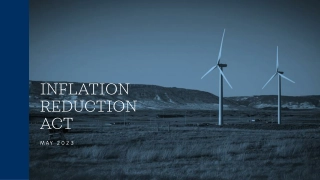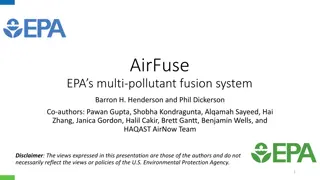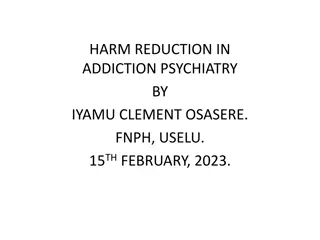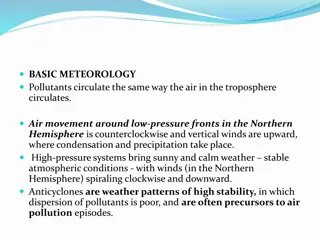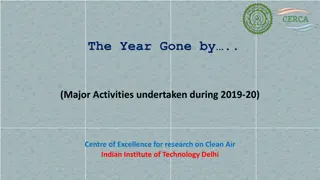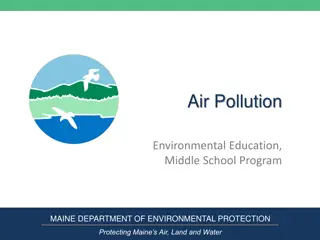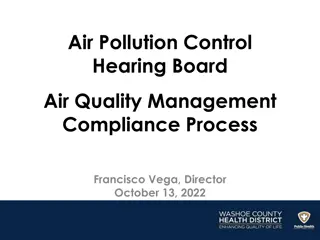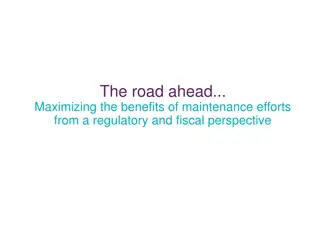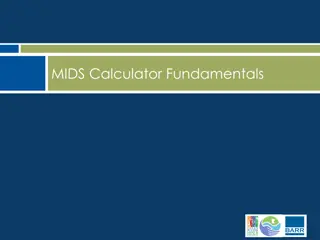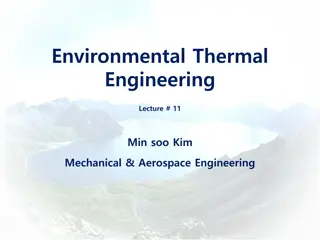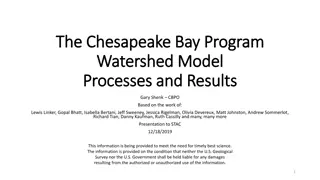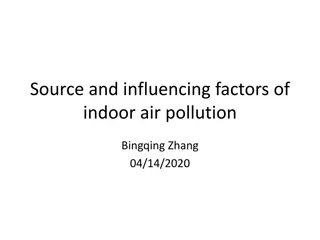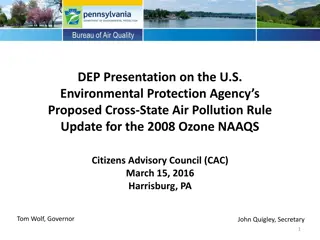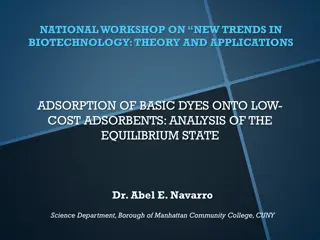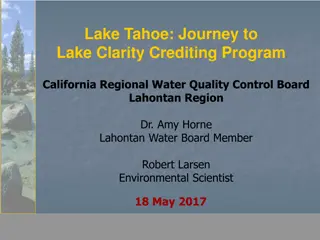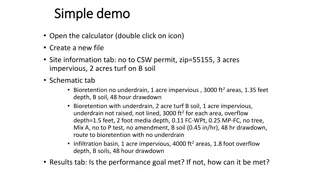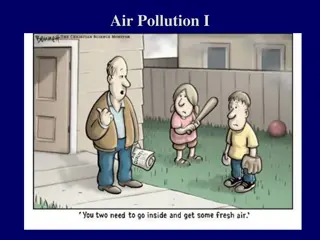Strategies for Multi-Air Pollutant Reduction in U.S. Industry Sectors
U.S. industrial sectors face challenges in meeting Clean Air Act regulations for reducing criteria air pollutants and hazardous air pollutants. The EPA has made progress towards a multi-pollutant sector approach by integrating emissions control databases, reviewing and harmonizing regulations, and reorganizing into sector teams. The CAAAC Work Group provides recommendations to the EPA for implementing a stationary source multi-pollutant approach through stakeholder engagement and sector roundtable discussions.
Download Presentation

Please find below an Image/Link to download the presentation.
The content on the website is provided AS IS for your information and personal use only. It may not be sold, licensed, or shared on other websites without obtaining consent from the author.If you encounter any issues during the download, it is possible that the publisher has removed the file from their server.
You are allowed to download the files provided on this website for personal or commercial use, subject to the condition that they are used lawfully. All files are the property of their respective owners.
The content on the website is provided AS IS for your information and personal use only. It may not be sold, licensed, or shared on other websites without obtaining consent from the author.
E N D
Presentation Transcript
Moving Towards Multi-Air Pollutant Reduction Strategies in Major U.S. Industry Sectors A Report to the U.S. EPA s Clean Air Act Advisory Committee November 17, 2011 Elineth Torres U.S. EPA Office of Air Quality Planning and Standards and Keith Mason U.S. EPA Office of Policy Analysis and Review
The Challenge Most U.S. industrial sectors are subject to numerous Clean Air Act regulations simultaneously Reductions in criteria air pollutants (e.g. SO2, NOx) and hazardous air pollutants (e.g. benzene) can be required from the same emission sources within an industrial facility Clean Air and Clean Energy Goals are merging Environmental technology investments and compliance strategies must address both conventional air pollution as well as greenhouse gas emissions and energy efficiency Optimizing public health and environmental outcomes in challenging economic times requires innovation Innovative environmental policies are complicated to implement given the significant investments made to develop and maintain our current systemof environmental regulations 2
EPAs Progress towards a Multi-pollutant Sector Approach Since 2004, the EPA has invested in a more integrated multi- pollutant approach Working with stakeholders to understand and establish priorities Improving emission inventories Integrating criteria air pollutants, hazardous air pollutants and greenhouse gases emissions and control databases Grouping air rules by industrial sectors Conducting comprehensive review of multiple rules Harmonizing regulatory schedules Developing integrated approaches for industrial sectors Cement, Oil and Gas, Refineries, Chemical Manufacturing Reorganizing into sector teams to better serve the mission of protecting human health and the environment 3
The CAAAC Work Group Purpose Provide the EPA with information, advice and recommendations regarding the development and implementation of an air pollution stationary source multi-pollutant approach Approach Work group meetings, teleconferences, sector Roundtables, and report discussions and drafting Outcomes Diverse group of Stakeholders informed; variety of perspectives reflected in the Report s conclusions and recommendations Opportunity Areas identified 4
Sector Roundtable Discussions WG conducted two 1-day roundtable discussions to explore the attributes and investigate the opportunities and challenges of moving towards a multi-pollutant system of air pollution regulation at stationary sources Iron and Steel - U.S. Steel, Arcelor Mittal, Nucor, American Iron and Steel Institute Chemical Manufacturing - 3M, Flint Hills Resources, American Chemistry Council 5
Roundtable Topics Overarching questions included: How might a sector-based, multi-pollutant strategy optimize the reduction of air pollution for the sector? What might optimization look like when considered in terms of emissions reduction, risk and impacts reduction, environmental justice, cost reduction, certainty, and operational and compliance flexibility? Topic areas included: 1. Timing and sequencing of regulations and requirements 2. Source definition and scope of applicable requirements 3. Monitoring and data 4. Reporting and record keeping 5. Emissions control technology and approaches 6. Energy use and efficiency improvement 7. Community-focused strategies 6
Work Group Conclusions 1. Time is right to take a more rigorous look at opportunities to align and optimize across air regulations 2. Multi-pollutant approaches promise benefits in many sectors, although the challenges are real 3. The availability and nature of opportunities to advance multi-pollutant approaches vary substantially across sectors 4. An incremental approach to exploring and implementing new sector-based, multi-pollutant approaches is underway and should continue within the confines of the Clean Air Act 7
Recommendations for EPA 1. Expand efforts to advance multi-pollutant clean air approaches within sectors, when such approaches can be anticipated to provide the intended health, environment, and cost-reduction benefits despite the anticipated challenges. Each effort should include consideration of criteria pollutant, hazardous air pollutant, and greenhouse gas emissions. 2. Establish a clear and transparent process for considering and advancing multi-pollutant clean air approaches within sectors. 3. Expand engagement with community residents, grassroots and EJ organizations, and develop approaches to reduce facility-specific and cumulative risks and impacts. 8
Recommendations for EPA 4. Identify and quantify air pollution co-benefits and trade-offs associated with multi-pollutant regulatory approaches. 5. Work with stakeholders to explore opportunities to simplify industrial source category definitions to advance multi- pollutant reduction strategies. 6. Explore, develop, and test integrated approaches to multi- pollutant monitoring, record keeping, and reporting that harness new monitoring and information technologies. 7. Disseminate information about tools and resources available to improve implementation of clean air regulatory programs (permitting innovation, timely rule implementation guidance, etc.). 9
Additional Report Contents Background on the U.S. EPA air multi-pollutant, sector- based activities Detailed discussion of seven opportunity areas with potential benefits and challenges and examples and observations Appendices: Work Group Charter and Membership CAA Requirements and Opportunities for an Integrated Approach Integrated Multi-pollutant Sector-based Approach for the Cement Manufacturing Industry Types of Industrial Sectors Addressed by Air Regulations Petroleum Refinery Sector Regulatory Summary 10
Any Questions? Thanks! Elineth Torres Torres.Elineth@epa.gov 919-541-4347 Keith Mason Mason.Keith@epa.gov 202-564-1678
Discussion Questions 1. What do you see as the most promising benefits of pursuing sector-based, multi-pollutant strategies? 2. What do you see as the one or two biggest challenges to expanding the use of sector-based, multi-pollutant strategies? 3. Do you see any near-term opportunities to advance multi- pollutant, sector-based approaches? 4. Are there any of the work group's recommendations that you would like to highlight as being particularly important for advancing sector-based, multi-pollutant strategies? 5. Do you have suggestions on the work group process that could assist future Committee efforts? 12
